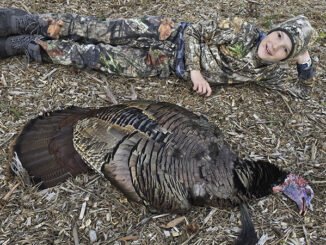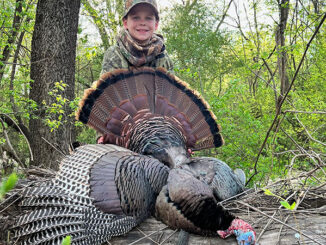How to bag a late-season gobbler
Andrew Kibler bagged this gobbler by changing up some of the tactics he used in the early days of th

Eleven-year-old Gavin Blackwell killed his first turkey on his first ever turkey hunt with his dad on April 13, 2024. […]

Mason Hilton killed his first turkey during a public land hunt on Monday April 8, 2024 in North Carolina. The gobbler weighed 19 pounds, […]

Copyright 1999 - 2024 Carolina Sportsman, Inc. All rights reserved.
Be the first to comment